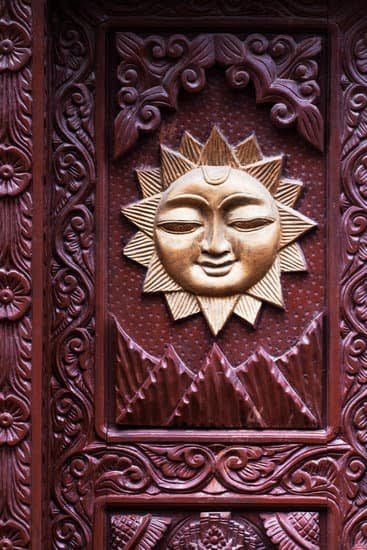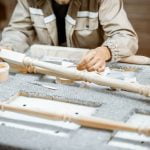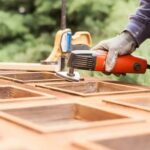Woodworking is a craft that requires attention to detail and precision, and the choice of wood for a woodworker’s bench vise is no exception. The type of wood used can greatly impact the performance and longevity of the vise, making it essential to select the best option. In this article, we will delve into the different types of wood commonly used for bench vises and explore the key factors to consider when making this important decision.
A woodworker’s bench vise is an essential tool for securing workpieces in place while sawing, planing, or performing other woodworking tasks. The quality of the wood used in constructing the vise plays a crucial role in its functionality, durability, and overall performance. With so many options available, understanding the characteristics of different types of wood is paramount in making an informed decision.
When it comes to choosing wood for a bench vise, there are several factors that must be taken into consideration. This includes understanding the differences between hardwood and softwood, as well as evaluating strength, resistance to wear and tear, stability, flexibility, cost, availability, personal preferences, and customization options. By considering each of these aspects carefully, woodworkers can make a well-informed choice that suits their specific needs and requirements.
Hardwood vs Softwood
When it comes to choosing the best wood for a woodworker’s bench vise, one of the most important decisions to make is whether to use hardwood or softwood. Understanding the differences between these two types of wood is crucial in making an informed decision that will ultimately impact the performance and longevity of your bench vise.
Understanding the Differences
Hardwood and softwood are not necessarily defined by their hardness or softness, but rather by their botanical classification. Hardwoods come from broad-leaved trees (angiosperms) while softwoods come from coniferous trees (gymnosperms). This fundamental difference in their cellular structure results in distinct characteristics that make them suitable for different applications.
The Pros and Cons
Hardwood is often favored for its strength, durability, and resistance to wear and tear, making it ideal for heavy-duty uses such as woodworking bench vises. However, hardwood can be more expensive and less readily available compared to softwood. Softwood, on the other hand, may be more affordable and widely accessible, but it tends to be less durable and may require additional maintenance over time.
Popular Options
Some popular hardwood options for bench vises include maple, oak, and walnut, known for their hardness and strength. Softwood options such as pine and cedar are also commonly used for bench vises due to their affordability and availability. Ultimately, the choice between hardwood and softwood will depend on factors such as budget, availability, intended use, and personal preferences.
Strength and Durability
When it comes to selecting the best wood for a woodworker’s bench vise, strength and durability are crucial factors to consider. The ability of the wood to withstand heavy pressure and constant use will ultimately impact the performance and longevity of the bench vise. Understanding how different wood species vary in terms of their strength and durability can help woodworkers make informed decisions when choosing the right material for their bench vise.
Impact on Performance
The strength of the wood directly affects the overall performance of a bench vise. A sturdy and robust wood will provide the necessary support for securing workpieces firmly in place without compromising stability.
On the other hand, a weak or less durable wood may lead to issues such as warping, cracking, or even breakage under pressure. Woodworkers need to carefully assess their specific needs and work requirements to determine the level of strength and durability they need from their bench vise.
Comparing Wood Species
Some popular hardwood options known for their exceptional strength and durability include maple, oak, and ash. These woods have a dense grain structure that contributes to their ability to withstand pressure and wear over time.
In contrast, softwoods such as pine or cedar may be less resilient but can still be viable choices depending on the intended use of the bench vise. It’s important for woodworkers to research and compare different wood species to find one that aligns with their desired level of strength and durability.
Recommended Wood Species
Based on its robustness, maple is often recommended for woodworking bench vises due to its excellent strength and resistance to wear. Oak is also a popular choice for its durability and stability, making it suitable for heavy-duty applications.
Additionally, ash is known for its flexibility combined with high shock resistance, making it an ideal option for woodworking tools like bench vises that require both strength and resilience. Consideration should also be given to how these woods hold up against moisture, as a long-lasting piece will be important in sustaining full functionality over time.
Resistance to Wear and Tear
When it comes to selecting wood for a woodworker’s bench vise, resistance to wear and tear is a crucial factor to consider. The constant clamping and unclamping of materials, as well as the pressure applied during woodworking tasks, can put significant strain on the wood. Therefore, it is essential to choose a wood species that can withstand this wear and tear over time.
Some wood species are naturally more resistant to wear and tear than others. These woods have characteristics such as hardness, durability, and natural oils that make them less susceptible to damage from constant use. Here are some examples of wood species known for their resistance to wear and tear:
- Maple: Maple is a popular choice for bench vises due to its hardness and durability. It has a tight grain structure that makes it less prone to denting or scratching during use.
- Ash: Ash is another hardwood option that offers excellent resistance to wear and tear. It is known for its strength and flexibility, making it an ideal choice for heavy-duty woodworking tasks.
- Teak: Teak is highly prized for its natural oils, which provide exceptional resistance to moisture, rot, and insect damage. This makes teak a top choice for outdoor or marine applications where wear and tear from environmental factors is a concern.
To maintain the quality of the wood over time and enhance its resistance to wear and tear, proper care and maintenance are essential. Regular cleaning, conditioning with appropriate oils or finishes, and avoiding prolonged exposure to harsh elements can help extend the lifespan of the wood used in a bench vise.
Overall, choosing a wood species with excellent resistance to wear and tear can contribute significantly to the longevity and performance of a woodworker’s bench vise. By selecting the right wood based on these considerations, woodworking enthusiasts can ensure that their bench vise remains durable and reliable throughout various projects.
Stability and Flexibility
When considering the best wood for a woodworker’s bench vise, it is essential to pay attention to the stability and flexibility of the wood. The right balance between stability and flexibility will ensure that the bench vise performs optimally and withstands the demands of woodworking projects. Here are some factors to consider when evaluating the stability and flexibility of different wood options:
Factors to Consider
- Grain structure: The grain structure of the wood affects its stability. Tight-grained woods like maple and ash are known for their stability, making them ideal choices for bench vises.
- Elasticity: The elasticity of wood determines its flexibility. Woods with good elasticity, such as hickory and oak, can handle the pressure exerted during clamping without breaking or splintering.
- Moisture resistance: Wood that can resist changes in moisture content is more stable. Look for wood species like teak and cedar, which are naturally moisture-resistant.
It is important to keep in mind that while stability is crucial for maintaining grip strength, flexibility allows for spongy materials like leather pads to conform easily under pressure without damaging the workpiece. Finding a wood that offers both qualities is key in choosing the best material for a bench vise.
In order to strike a balance between stability and flexibility, it may be necessary to experiment with different types of wood or consider hybrid designs that incorporate multiple species. This approach allows woodworkers to customize their bench vises according to their specific needs and preferences, ensuring that they get the best performance from their woodworking tool.
Cost and Availability
When it comes to choosing the best wood for a woodworker’s bench vise, cost and availability are important factors to consider. The type of wood you choose can impact the overall cost of your bench vise, as well as its availability depending on your location and access to specific wood species. It’s essential to strike a balance between finding a wood that meets your needs and preferences while also being mindful of the associated costs.
In terms of cost, hardwoods are generally more expensive than softwoods due to their density and durability. However, they also tend to last longer and withstand wear and tear better than softwoods, making them a worthwhile investment for many woodworkers. Popular hardwood options for bench vises include maple, oak, cherry, and ash, among others. These woods offer superior strength and resilience, but they may come at a higher price point compared to softer woods.
On the other hand, softwoods like pine or cedar may be more budget-friendly and readily available in many regions. While they may not have the same level of durability as hardwoods, they can still be suitable for certain woodworking projects where heavy-duty use is not a primary concern. Softwoods are often chosen for their affordability and ease of working with, making them a practical choice for hobbyists or those on a tighter budget.
Ultimately, the cost and availability of different wood species will depend on factors such as your location, local suppliers, and personal budget considerations. It’s important to research the options available to you and weigh the pros and cons of each wood type based on your specific woodworking needs. Finding a balance between cost-effectiveness and quality will ensure that you select the best wood for your woodworker’s bench vise.
| Wood Type | Cost | Availability |
|---|---|---|
| Hardwood (e.g. maple, oak) | Higher | Widely available through specialized suppliers |
| Softwood (e.g. pine, cedar) | Lower | Readily available at local home improvement stores |
Personal Preferences and Customization
When it comes to choosing the best wood for a woodworker’s bench vise, personal preferences and customization play a significant role. Woodworkers often have specific aesthetic and practical considerations when selecting wood for their bench vises, and the ability to customize the vise to meet their individual needs is essential. Whether it’s the color, grain pattern, or overall feel of the wood, there are several factors that woodworkers consider when customizing their bench vises.
One important aspect of personal preference and customization is the type of wood chosen for the bench vise. Some woodworkers prefer a certain hardwood species for its rich color and durability, while others may opt for a more budget-friendly softwood option that still meets their functional needs. Understanding the characteristics of different wood species, such as their strength, flexibility, and resistance to wear and tear, can help woodworkers make informed decisions based on their personal preferences.
In addition to choosing the type of wood, customization options for woodworker’s bench vises also include size, shape, and additional features like wooden jaws or decorative elements. Woodworkers may choose to personalize their bench vise by adding unique details or incorporating elements that align with their specific woodworking style. The ability to customize a woodworker’s bench vise allows individuals to create a tool that not only functions effectively but also reflects their personality and craftsmanship.
| Characteristic | Considerations |
|---|---|
| Wood Species | Different types of hardwood and softwood options based on personal preferences |
| Customization Options | Size, shape, additional features like wooden jaws or decorative elements |
| Personalization | Reflecting individual personality and craftsmanship in the design of the bench vise |
Conclusion
In conclusion, the choice of wood for a woodworker’s bench vise is an important decision that can greatly impact the performance and longevity of the tool. Understanding the differences between hardwood and softwood, as well as considering factors such as strength, durability, resistance to wear and tear, stability, flexibility, cost, availability, personal preferences, and customization options are essential in making an informed decision.
When it comes to selecting the best wood for a bench vise, it ultimately depends on individual needs and preferences. For those looking for strength and durability, hardwoods such as maple or oak may be the best option. However, if cost and availability are a concern, there are also budget-friendly softwood options like pine or fir that can still offer good performance.
It is important to note that this decision should not be taken lightly. Take into account your specific woodworking needs and personal aesthetic preferences when choosing the best wood for your woodworker’s bench vise.
Ultimately, experimenting with different wood options can help you find the perfect match for your woodworking projects. So whether you prefer the durability of hardwoods or the affordability of softwoods, remember that the right choice in wood can make all the difference in your woodworking craftsmanship.

Hi everyone! I’m a woodworker and blogger, and this is my woodworking blog. In my blog, I share tips and tricks for woodworkers of all skill levels, as well as project ideas that you can try yourself.





